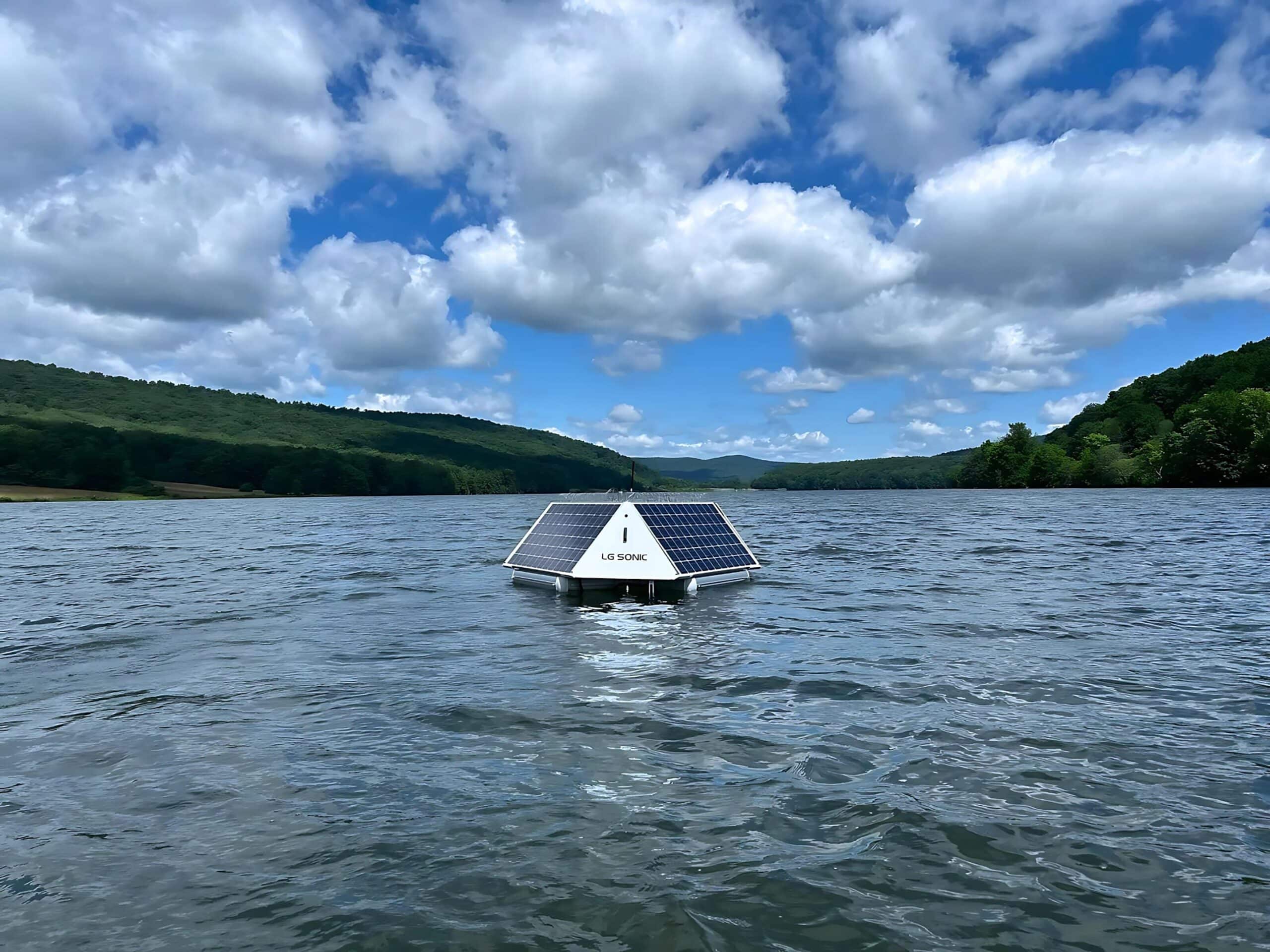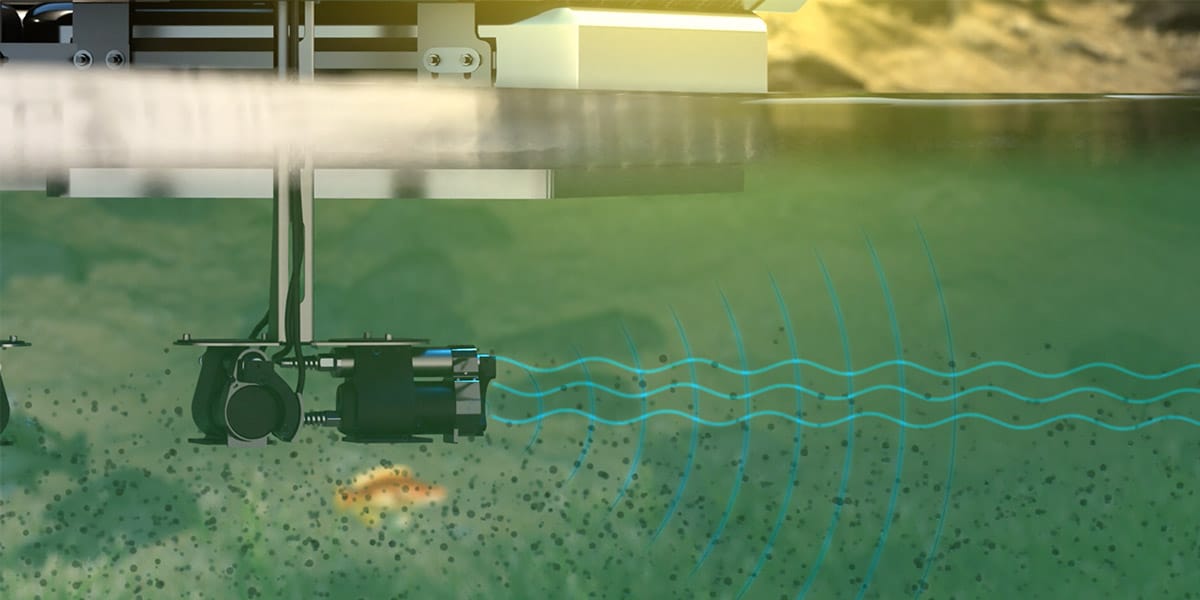Summary
-Harmful algae are adaptive organisms that thrive in changing water environments.
-Traditional algae control methods lose effectiveness as algae develop resistance.
-Interactive algae control uses ultrasound with dynamic frequency adjustment to target diverse algal species.
-The MPC-Buoy with Interactive Algae Control combines real-time monitoring and adaptive treatment to deliver chemical-free, effective results through an innovative algae control system.
“When you’re treating algae with ultrasound, they may actually become resistant to the ultrasound.
Interactive Algae Control helps prevent this by adjusting treatments over time.” – Lisa Brand, CTO at LG Sonic
Why Traditional Algae Control Isn’t Enough?
Harmful algal blooms (HABs) are among the most pressing challenges in water management today. As climate change intensifies and nutrient pollution increases, algal blooms are appearing more frequently and lasting longer across drinking water reservoirs, industrial lakes, and mining industries.
While ultrasound has emerged as a preferred chemical-free solution, conventional systems using fixed frequencies fall short over time. That’s because algae are not static; they adapt. Species like blue-green algae (cyanobacteria) can regulate their buoyancy, form surface scums, and even build resistance to consistent ultrasonic signals.
To effectively control algae, it is crucial to adopt advanced technologies that can adapt to these changes. This is where interactive algae control changes the game.
The Importance of Algae Control
Algae control is essential for maintaining water temperatures, the health and sustainability of aquatic ecosystems. Excessive algae growth can lead to a range of problems, including:
- Harm to aquatic organisms: Algal blooms can produce toxins that can harm or kill aquatic organisms, including fish, plants, and other aquatic life.
- Water quality issues: Algal blooms can contaminate drinking water, affect the taste and odor of water, and reduce water clarity.
- Economic impacts: Algal blooms can impact recreational activities, tourism, and commercial fishing, resulting in significant economic losses.
- Human health risks: Algal blooms can produce toxins that can harm human health, including liver and kidney damage.

Effective algae control measures, such as ultrasonic algae control systems, can help to prevent these problems and maintain the health and sustainability of aquatic ecosystems.
How Algae Adapt and Why It Matters
Algae are highly adaptive organisms. They can thrive in warm or cold waters, under thick ice, or in nutrient-depleted environments. Among competing plants and bacteria, they’re often the first to adapt due to their fast reproduction and minimal resource requirements. Understanding algal biomass is crucial for developing effective techniques to prevent harmful algal blooms, as environmental factors like temperature significantly impact algal growth and adaptation.
Blue-green algae, in particular, rise to the water surface using gas vesicles, tiny buoyancy chambers that they enlarge or shrink based on sunlight availability. They have gas vesicles that are large or small depending on the water column. This is why disrupting algal cells buoyancy through ultrasound is so effective. The treatment prevents algae from reaching the surface, where they absorb light and photosynthesize, stopping the bloom before it takes hold.
Understanding Interactive Ultrasonic Algae Control
Interactive ultrasound technology does more than emit sound waves. It uses real-time data and adaptive parameters; including frequency, amplitude, duration, and order, this is to target the algae based on their type and growth stage.
The technology disrupts the structure and function of algal cells, leading to changes in metabolism and potential algal cell death.
Algae respond differently depending on:
- Their species
- Environmental conditions (light, nutrients, temperature)
- Whether they are actively growing, peaking, or decaying
Instead of using a “one-size-fits-all” frequency, our solution applies an ever-changing set of ultrasonic signals, ensuring the algae don’t adapt and the system remains effective year-round.
What is The Effectiveness of The Interactive Algae Control?
Because water bodies are complex systems with many influencing factors, it can be challenging to isolate the exact impact of ultrasound on water quality without extensive effort and historical data from before the project began. Therefore, it’s more practical to look at operational indicators that were previously affected by algal blooms prior to the installation of the MPC-Buoys and compare them to the data collected after installation.

The MPC-Buoy: Data-Driven Algae Control
The MPC-Buoy is a solar-powered, floating device that brings this interactive technology to life. It’s more than a treatment unit, it’s a smart water management system designed to address challenges in a water treatment plant.
1. Real-Time Water Quality Monitoring
Every 10 minutes, the MPC-Buoy collects water quality data, including:
- Chlorophyll-a (green algae)
- Phycocyanin (blue-green algae)
- Turbidity, pH, temperature, dissolved oxygen
2. Data Analysis & Prediction
The buoy sends this data to the cloud, where AI algorithms:
- Detect which algae are present
- Identify their growth stage
- Predict algal bloom formation
3. Adaptive Treatment
Based on analysis, the system selects and adjusts:
- Ultrasound frequency
- Amplitude and duration
- Waveform order
Maintaining balanced levels of dissolved oxygen is also essential in this process. Adequate oxygen levels support aquatic life and help break down organic matter, reducing nutrient buildup that fuels further algal growth. By improving water circulation and enhancing oxygen distribution, this environmentally friendly solution can create conditions that are less favorable for harmful algal species, while promoting a healthier aquatic ecosystem.
Comparison of Algae Control Methods
There are several methods available for controlling algae growth, including:
- Chemical control: Chemicals such as algaecides, copper sulphate can be used to kill algae, but they can also harm aquatic organisms and contaminate water.
- Physical control: Physical methods such as ultrasonic algae control systems can be used to control algae growth without harming aquatic organisms.
- Biological control: Biological methods such as introducing algae-eating fish can be used to control algae growth, but they can also have unintended consequences.
- Nutrient control: Reducing nutrient in water can help to prevent algae growth, but it can be difficult to achieve and may require significant changes to land use practices.
Ultrasonic algae control systems are a non-chemical and non-invasive method of controlling algae growth that can be effective in a range of aquatic environments.
Sustainable and Scalable
Unlike chemical treatments like copper sulphate, which offer short-term relief but disrupt ecosystems, interactive ultrasound is:
- Eco-friendly (harmless to fish and aquatic plants)
- Low-maintenance (no refills, no chemicals)
- Fully automated (24/7 performance based on real-time data)
- Scalable across drinking water utilities, industrial tailings dams, and recreational lakes
This innovative algae control system uses ultrasonic sound waves to monitor water quality and control algae without the need for chemicals, thereby safeguarding the ecological balance and reducing operational costs.
It’s a smarter, safer, and more sustainable way to manage algae, one that protects both operations and ecosystems.
Conclusion
As harmful algal blooms become more persistent and adaptive, fixed-frequency treatments are no longer enough. Interactive Algae Control with the MPC-Buoy offers a smarter, more responsive approach by combining real-time monitoring with adaptive ultrasound treatment. This ensures continued effectiveness across changing conditions and algal species. By reducing chemical dependency and maintaining ecological balance, it supports long-term water health and operational efficiency. Ultimately leading to cleaner water, healthier ecosystems, and more resilient water management strategies.
